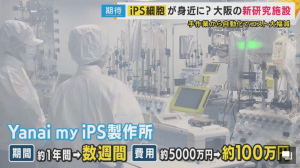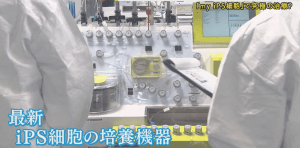Walking through Kyoto’s research corridors, one senses a quiet revolution brewing. At its epicenter lies “Yanai my iPS制作所” (Yanai my iPS Cell Factory)—an initiative poised to dismantle the steepest barriers in regenerative medicine. What distinguishes this venture isn’t merely its science, but its radical reimagining of accessibility.
The iPS Cell Conundrum: Cost and Complexity
Induced Pluripotent Stem (iPS) cells, pioneered by Nobel laureate Shinya Yamanaka, are adult cells reprogrammed into embryonic-like states. These chameleons can morph into any human tissue—heart neurons, pancreatic cells—making them invaluable for modeling diseases, drug screening, and cell therapies. Yet their promise remains bottlenecked by prohibitive costs. Conventional iPS cell production runs upward of $100,000 per patient line, owing to:
- Labor-intensive protocols: Manual culturing requiring months of skilled technician work
- Quality control hurdles: Rigorous testing for genetic stability and contamination
- Facility overheads: Cleanroom standards rivaling semiconductor fabs
Such economics render widespread therapies implausible—a disconnect Yanai my iPS seeks to resolve.

Inside Yanai my iPS: Visionaries and Velocity
Launched in 2023 under Kyoto University’s Institute for Advanced Study of Human Biology (ASHBi), this venture marries public ambition with private acumen:
- Leadership: Directed by Dr. Knut Woltjen, a Canadian biologist acclaimed for CRISPR innovations, with strategic oversight by iPS pioneer Prof. Mitinori Saitou
- Investment: Anchored by Fast Retailing (Uniqlo’s parent firm) CEO Tadashi Yanai’s $110 million endowment—Japan’s largest private stem cell grant
- Mission: To slash iPS production costs 100-fold while automating cell line derivation, banking, and differentiation
- Timeline: Targeting clinically compliant iPS lines for $1,000 by 2027, with therapeutic applications by 2030
Their work transcends mere manufacturing—it’s developing AI-driven bioreactors that minimize human intervention while maximizing reproducibility.
The Cost Revolution: How $1,000 Cells Transform Medicine
Yanai my iPS achieves affordability through three disruptive strategies:
- Robotics & AI Integration: Automated cell culture systems reduce labor by 90% while enhancing precision
- Standardized “All-in-One” Kits: Pre-optimized reagents eliminate batch variability and technician discretion
- Scalable Bioreactors: Parallel processing of hundreds of lines simultaneously, cutting facility costs per unit
The implications ripple across medicine:
- Democratized Therapies: Affordable retinal or cardiac cell transplants for common diseases like AMD or heart failure
- Personalized Medicine: Patient-specific disease modeling for rare genetic disorders without pharma-scale budgets
- Global Accessibility: Exportable production modules enabling low-resource regions to participate in regenerative care


Beyond Economics: A Paradigm Shift in Biomanufacturing
Yanai my iPS symbolizes more than cost reduction—it redefines how academia and industry bridge the “valley of death” between discovery and therapy. By treating cell manufacturing as an engineering challenge rather than an artisanal craft, it:
- Validates Japan’s commitment to lead in applied iPS research post-Yamanaka
- Creates a template for global cell therapy infrastructure, akin to CERN for particle physics
- Forces a reckoning with healthcare inequity—proving that cutting-edge medicine needn’t be luxury medicine
As Woltjen noted in our Kyoto lab visit: “We’re not just building cells; we’re building hope at scale.” If successful, Yanai my iPS could shift regenerative medicine from boutique hospitals to community clinics—making the once-unimaginable as routine as a blood test.
